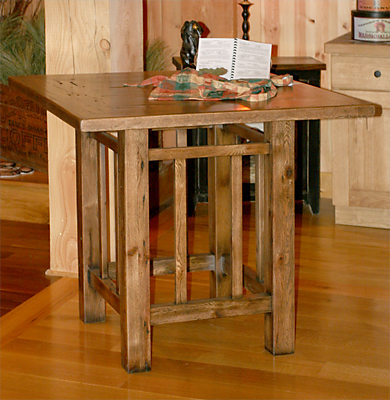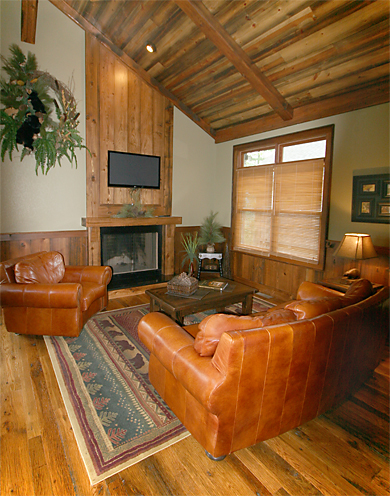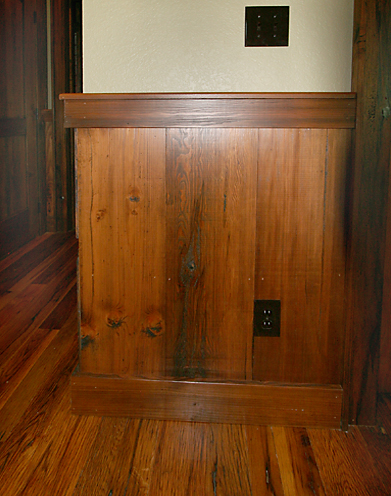

|
The Arts & Crafts architectural style in new homes today incorporates many of the same design features of Craftsman style architecture built all over the US between 1903 and 1930: comfortable spaces using beautiful woodwork, built-ins, and natural materials; harmonizing with the environment and using natural light to enhance the warm feeling. Gustav Stickley, a leader in the design movement in America in the early 1900s, felt the home should harmonize with its natural surroundings, and be built - as much as possible - from local materials.
Everhart Lumber is a source for many elements of Arts and Crafts style architecture, for exterior, interior, furniture, and decorative components. Arts & Crafts style homes liberally use warm-finished wood, incorporating charm with interior wood features such as window seats, open staircases, fireside nooks, built-in furnishings, wood wainscoting, exposed internal wood beams and rafters, and well-crafted cabinets. Craftsman decor is a balance of beautiful built-in cabinetry, natural materials, woodwork, and nature-inspired colors. One visit to the Everhart Showroom reveals how to achieve the Arts & Crafts ideals, with an Appalachian twist, in a comfortable home interior. |
 |
|
Choose Everhart as a lumber source of a wide variety of wood species to be used in posts, beams, rafters, siding and roofing. Our in-house millwork shop creates prefinished wood flooring, paneling, wainscoting, mantles, doors, molding, and more. Cabinetry and furniture made by Everhart's craftsmen can be custom styled with native species, rectilinear design, rustic handmade style and hand-rubbed finishes to highlight the beauty of the wood… perfect for new Craftsman style interiors. Today's Arts & Crafts homes celebrate the ideals of this historic design style with materials from Everhart Lumber.
|
|
 |
 |
|
HISTORY
The Arts & Crafts movement of the late 1800s influenced architecture, furniture styles, textiles, stained glass, woodwork, and many other decorative elements of interior design. The movement's founders, primarily from England, incorporated many social ideas as the basis of their style, reacting against growing industrialization and the increasing mass production of consumer goods of poor design and quality. It was a revolutionary movement, challenging the elaborate embellishment of the Victorian era preceding it, calling for departure from styles which ignored the quality of the materials used. Arts & Crafts designers rejected grand classical style, and advocated traditional craftsmanship using simple forms, good proportions, ordinary materials, and asymmetry - combined with sophistication. The construction of objects was often still visible, and the use of quality, but ordinary, materials was emphasized. To highlight the beauty of the craft, some products were deliberately left slightly unfinished, resulting in a rustic effect. In time, the English Arts & Crafts movement stressed artfully designed handcrafted goods at the expense of mass market pricing, often resulting in products only the wealthy could afford - quite contradictory to the original philosophical goals. In the United States, "Craftsman Style" is often used to describe this design period, predominating from about 1910 to 1925. In America, proponents adopted the early British Arts & Crafts ideal, but translated it into design for the masses rather than limiting it to fine individualized craftsmanship. New Yorker Gustav Stickley (1858?-1942) recognized that the growing market of middle class consumers wanted affordable, functional, sturdy furniture. His influential magazine, The Craftsman, heralded Stickley's ideals of simplicity, honesty in construction, and truth in materials, in architecture, furniture, and decorative arts. He and his brothers combined factory methods to create basic components with craftsmen to finish and assemble sturdy furnishings, which were sold in vast quantities and widely imitated Lead by architects, designers, and educators, the rectilinear and simple lines of American Craftsman Style design grew and spread, calling for design reform, higher standards in the handicrafts, and appreciation of the value of good design. Mission Style, Prairie Style, and "California bungalow" styles of residential building are offshoots of Craftsman Style, and can still be seen in American towns developed during the early 1900s and never destroyed during the days of post-war urban renewal projects. In Craftsman architecture, buildings were designed to be in harmony with the environment by using natural materials. Wood was a key component of Craftsman architecture, with exposed joinery and exposed timbers to emphasize structural qualities. Tenon-and-key joints, visible dowels, exterior mounted hinges celebrated a "handmade" touch in furniture and de-emphasized machine processes. Built-in cabinetry, fireplaces with inglenooks for seating, wainscoting, paneling, wood carvings and simplified moldings prevailed in interiors, with rectilinear forms prominent. Different species of native wood were mixed, each piece artfully selected, grains unobscured and highlighted with staining and a satin finish. Quarter-sawn oak was prized in furniture and flooring for its beauty, and became a hallmark of Craftsman style. Wrought iron, pewter, hammered copper, slate, leather, and stones were other common construction materials. |
|
Everhart Lumber Company, LLC
911 Veterans Memorial Drive
PO Box 68
Tellico Plains TN 37385
Toll free: 877-857-8062 * Phone: 423-253-2323
Open Tuesday - Friday 9:00am to 5:00pm
Saturday 9:00am to 2:00pm
Closed Sunday and Monday
email: info5@everhart-lumber.com
| Wide Wood Slabs | Specialty Wood Flooring | Custom Cabinets | Custom Made Furniture |
| Specialty Wood Paneling | Hard-to-Find Wood Products | Custom Millwork | Mantels |
| Post & Beams | Arts & Crafts Styling | About Us | Our Showroom | Customer Gallery | FAQs | Online Store |
| Google+ | YouTube | Facebook | News | Video | Contact Us | Map & Directions |
| Web Accessibility | Privacy Policy | Home |